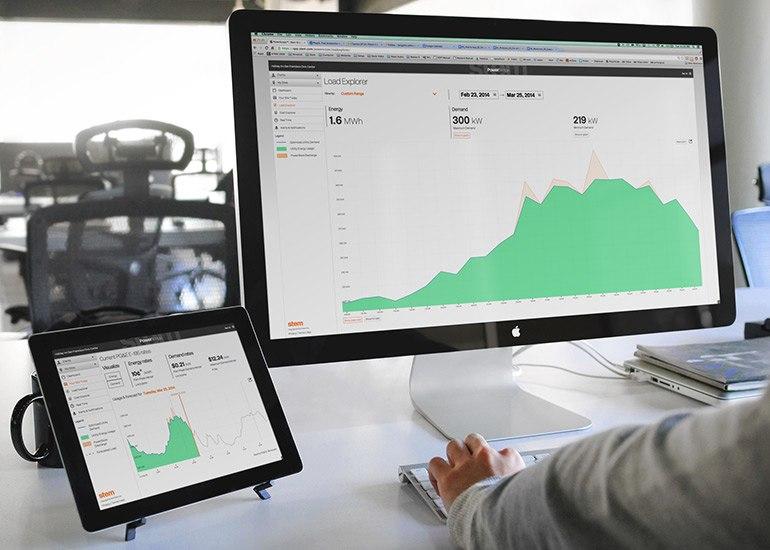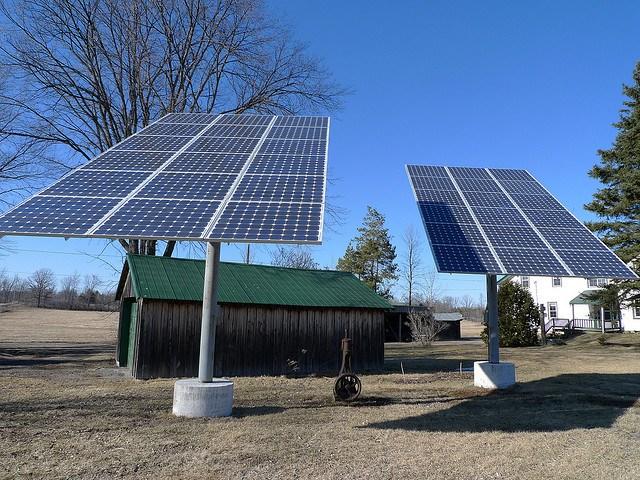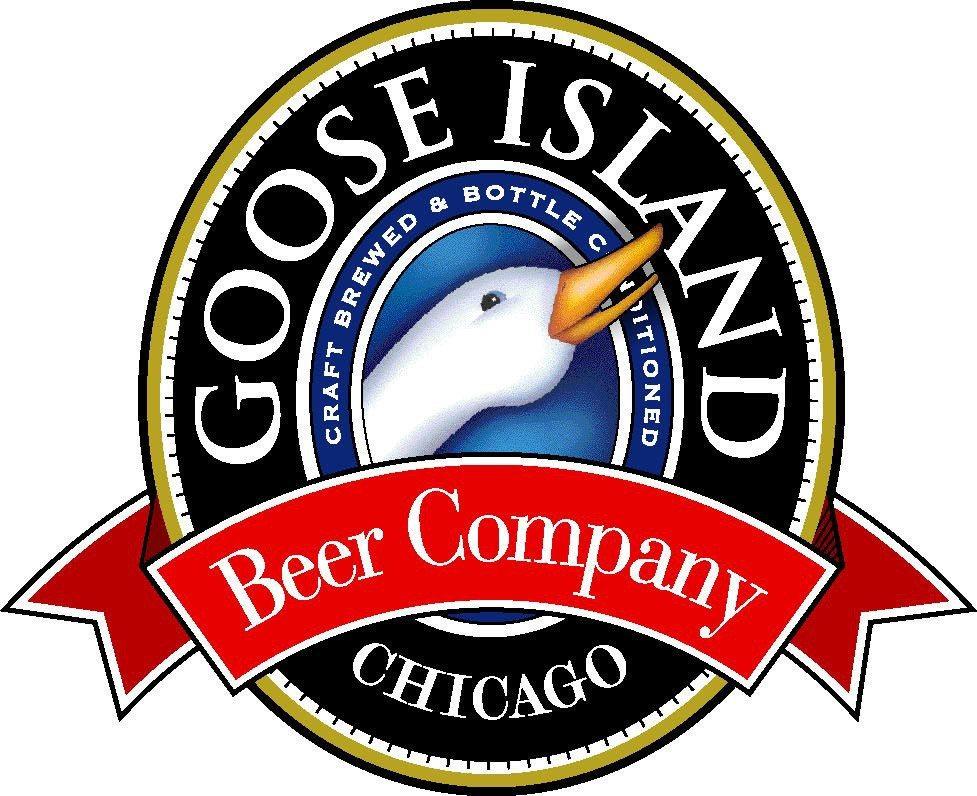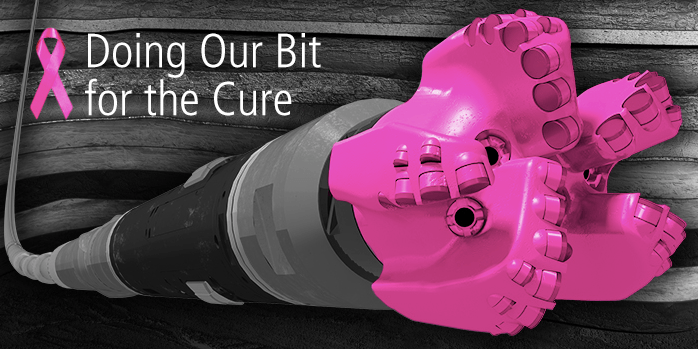Climate Change: Ready for a New Era of Extreme Weather?


A large part of the response to climate change amounts to holding actions to mitigate the impact of fossil fuel emissions and to better prepare for unprecedented storms, hurricanes and floods.
Is enough being done on the latter point — preparedness for extreme weather? The answer is no, according to a 76-page report released this month by the National Wildlife Federation, Allied World Assurance Company Holdings and Earth Economics. In fact, the organizations say, there’s a major “preparedness deficit.”
The study, Natural Defenses from Hurricanes and Floods: Protecting America’s Communities and Ecosystems in an Era of Extreme Weather, examines the growing risks from potentially-catastrophic natural hazards; the policy solutions that can safeguard people, property and wildlife habitats; and local case studies that can point the way forward.
“Our preparedness deficit is the result of years of inaction and under-investment at the federal, state and local levels,” says Collin O’Mara, NWF president and CEO. “It’s time for our elected officials to reinvest in our natural defenses and this report offers a blueprint for bipartisan, market-based solutions.”
The report reads: “Far too many people who live along America’s coasts and rivers are at considerable risk of personal harm from floods and hurricanes, and their properties and economic livelihoods are highly vulnerable as well. Efforts by policy makers to grapple with and respond to these problems have been inadequate.”
Climate impacts are hitting home faster than governments are adapting, the report's authors say. “But it’s not too late to protect our communities with cost-effective, nature-based approaches for risk reduction, ” But — and there are always many buts when it comes to reacting to and dealing with climate change — what’s needed are major increases in “investments in proactive risk reduction measures” on the scale of a “Marshall Plan,” that will take into consideration the growing risks from more intense storms, flooding and sea level rise.
Two years ago Superstorm Sandy, a storm climate scientists say was worsened by global warming, slammed into the East Coast. It killed 72 Americans, touched 24 states, knocked out power to more than 7 million people and caused an estimated $70 billion in damage. In 2014, the U.S. has just come off the hottest six-month stretch on record globally, and America saw the ninth wettest summer on record:
- Torrential downpours in the Northeast dumped a summer’s worth of rain in just a matter of hours, while parts of the Midwest received two months of rainfall in one week.
- Montana had its wettest August on record with 276 percent of its average precipitation.
- Even in the midst of historic drought, California has experienced record thunderstorms and deadly flash floods.
The report's authors say solutions are at hand: “Policymakers can make coastal and riverine communities safer and more resilient to floods and hurricanes by focusing on natural and nature-based approaches for risk reduction. These approaches protect and restore natural infrastructure such as wetlands, dunes, riparian zones, living shorelines, and natural open space. They are cost-effective and produce a host of benefits to residents in addition to flood protection, including clean water, habitat for fish and wildlife, and increased opportunities for recreation and tourism. They also produce savings for taxpayers nationwide.”
The authors note that improvements in seven areas of federal and state law are needed:
- Phase out subsidies for federal flood insurance to reduce incentives for development in high-risk and environmentally-sensitive areas while taking care to address social equity impacts.
- Prioritize federal investments on the front end of disasters, potentially reducing billions in disaster relief after storms and floods.
- Further reduce and eliminate federal subsidies that lead to more development on barrier islands.
- Ensure better protection of wetlands, intermittent streams, and other water bodies that can absorb floodwaters, act as speed bumps for storm surge, and buffer communities.
- Refocus Army Corps of Engineers on restoration projects that work with nature to reduce flood risk rather than on multi-billion dollar civil works construction projects.
- Ensure that state-sponsored insurance programs are designed in ways that discourage development in hazard-prone areas while protecting socially-vulnerable communities.
- Take urgent action to reduce carbon pollution that’s worsening extreme weather.
Those are logical and needed steps as the nation must cope with a “new normal” of extreme weather conditions. And a Marshall Plan approach is desperately needed.
Here’s the thing however: The Marshall Plan was the American initiative to aid Europe after World War II, in which the United States gave $17 billion — or the equivalent of about $160 billion in current dollars — in economic support to help rebuild European economies over four years beginning in April 1948. What are the odds that the U.S. will spend on that scale over the coming decades?
Image credit: Picture extracted from the Natural Defenses report
SunShot Helps Bay Area Startups Drive Down Solar Costs


Following through on the mitigation aspects of President Barack Obama's Climate Action Plan, the Department of Energy on Oct. 22 announced the latest round of SunShot Initiative award winners. Reducing fossil fuel use is the most effective means of reducing the greenhouse gas emissions that are fueling climate change. By investing in innovative solar and renewable energy research and development, DOE is promoting further reductions in the cost of solar energy -- making it an economically more attractive, emissions-free alternative to fossil fuels.
In this latest round of SunShot R&D funding, DOE awarded a total of $53 million to help young, small U.S. companies carry out 40 innovative solar energy projects that could help realize the SunShot Challenge goal of driving the total installed cost of solar energy down to 6 cents per kilowatt-hour by 2020. Thanks to SunShot, the U.S. is 60 percent of the way there, with the average price of utility-scale solar-generated electricity having dropped from about 21 cents to 11 cents per kWh.
Among the latest crop of SunShot R&D award winners are Cogenra Solar, Mosaic and Stem -- promising young U.S. companies at the forefront of innovation in upstream and downstream solar photovoltaic (PV) energy and intelligent energy storage technology. All three, as it turns out, are based in the San Francisco Bay area.
The multiple benefits of investing in solar energy R&D
U.S. solar electricity generation capacity grew at a torrid 418 percent rate from 2010 to year-end 2013. Though it's the fastest growing category of any type of electric power generation, solar energy only accounted for 12,057 megawatts, or 1.13 percent, of overall U.S. generation capacity in 2013.
U.S. solar power generation capacity is expected to continue to grow rapidly in coming decades, however. According to DOE, solar energy could meet 14 percent of U.S. electricity needs by 2030 and 57 percent by 2050. Some believe those estimates are modest. Realizing SunShot Initiative targets would also drive creation of green jobs, including helping to revitalize U.S. manufacturing, in which relatively well-paid skilled jobs are the rule. As DOE states:
“Achieving the SunShot Initiative's 6 cents per kWh goal would lead to the creation of 390,000 new solar jobs by 2050.”
SunShot Initiative, solar jobs and electricity costs
Also significant, achieving SunShot goals would go a long way toward mitigating the negative effects high and volatile fossil fuel prices have on the cost of generating electric power.
“In the scenarios envisioned by the SunShot Initiative, solar power could decrease costs by up to 14 percent and save up to $20 billion annually by 2050 while still meeting the nation's carbon-cutting goals,” according to DOE.
Federal R&D program funding and public-private partnerships such as those being enacted through the SunShot Initiative have been pivotal to promoting growth across the renewable energy value chain. Commenting on the latest round of SunShot R&D awards, Energy Secretary Ernest Moniz stated:
“As U.S. solar installation increases and the cost of solar electricity continues to decline, solar energy is becoming an increasingly affordable clean energy option for more American families and businesses. “Today, the U.S. has 15.9 gigawatts of installed solar power – enough to power more than 3.2 million average American homes. The projects announced today will help the U.S. solar energy industry continue to grow, ensuring America can capitalize on its vast renewable energy sources, cut carbon pollution, and continue to lead in the world in clean energy innovation.”
SunShot and Bay Area solar startups
San Franciso Bay Area solar energy startups, such as Cogenra, Mosaic and Stem, figure prominently in the SunShot Initiative's success. Among the latest round of solar R&D funding recipients, DOE awarded Mountain View-based Cogenra $2 million to help finance construction of an automated production line for its record-setting Dense Cell Interconnect (DCI) technology.
Cogenra's DCI holds out the promise of boosting the power output of solar modules by as much as 15 percent. In tests at third-party labs, DCI “set world records for peak power output in N-type mono crystalline, P-type mono crystalline and multi crystalline silicon photovoltaic (PV) cells.” Cogenra achieved these substantial gains by “eliminating copper interconnect ribbons, solder joints and inter-cell gaps,” DOE explains.
Upstream of solar cell and module manufacturing, pioneering solar energy finance startups such as Oakland's Mosaic are making solar more accessible and affordable. The developer of a peer-to-peer online platform for investing in solar energy projects, DOE awarded Mosaic its second cooperative award.
Mosaic will use the $650,000 SunShot award to support its growing home solar lending business. That includes further improving its home solar Web portal, which home solar system installers are using to close deals, Mosaic explains in a press release. Mosaic says monthly payments on its home solar loans are among the lowest in the market. The company is raising capital for its home solar loans by aggregating investments via crowdsourcing. "The SunShot Initiative is a model for the public sector's power to support private sector innovation," said Mosaic co-founder and President Billy Parish. "We're thrilled to receive a second round of funding from SunShot's Incubator program and to be joined by the solar industry's brightest innovators."
Advances and cost reductions in intelligent energy storage technology of the kind being developed and deployed by Millbrae, California-based Stem may be the missing piece of the puzzle that triggers another acceleration in solar energy deployment. With $935,000 in SunShot R&D funding, Stem aims to improve grid stability and lower the cost of integrating solar energy generation assets with electric grids. “While storage and solar require hardware such as batteries and panels, Stem has demonstrated the considerable value that can be unlocked by coupling these technologies with advanced software capabilities,” Stem CEO John Carrington was quoted in a press release. “This award underscores the critical role data analytics play in integrating technologies into the U.S. electric grid.”
Editor's Note: An earlier version of this post reported that the national average total installed cost of solar dropped from 21 cents to 11 cents per kWh. The post has been updated to note that these figures only refer to utility-scale solar energy.
*Image credits: 1) DOE SunShot Initiative; 2) DOE Solar Manufacturing Partnerships; 3) Mosaic; 4) Stem, Inc.
How Hospitals Are Stepping Up to the Challenge of Climate Change


By Kathy Gerwig
Health care organizations are in the business of supporting human health. Yet the irony is that health care organizations, and the hospitals they operate, are no small players in contributing to climate change. Hospitals account for 8 percent of greenhouse gas emissions in the U.S. They spend $5.3 billion on energy every year, and use twice as much energy per square foot as traditional office space. They generate more than 2 million tons of waste per year. And they are among the top 10 water users in their communities, with some facilities using up to 700,000 gallons of water per hospital bed per year.
It’s a considerable environmental footprint. And as the consequences of climate change are becoming all the more real, posing the “biggest global health threat in the 21st century,” it is only natural that health care organizations should take a leading role in addressing this challenge.
And they are.
A growing number of health care business and clinical leaders are turning away from ideological disputes and tired political battles over climate change and are simply stepping up to the challenge. They are embracing environmental stewardship as part of their commitment to improving health. They are mounting a response to the health impacts of climate change that are predicted and are already being felt. And they are looking hard at the environmental impact of their hospitals and operations in order to address their role in driving climate change and do something about it.
Last month’s United Nations Climate Summit illustrates the complexity of getting world leaders to agree on a plan of action to tackle the climate crisis. By contrast, some of the world’s leading health care organizations see their mission of healing people and healing the planet as one and the same. They carry out their health care mission with the understanding that environmental health, community health and individual health often interact in such complex ways as to be often indistinguishable. If we want to achieve health, we must tackle all the determinants of health, and we must do it in partnership with one another.
In my book “Greening Health Care, How Hospitals Can Heal the Planet”, I examine the intersection of health care and environmental health, exploring the challenges that health care has faced in owning up to its impact on the environment. I look at the many ways that health care is helping to shift the dialogue around environmental sustainability by stepping up to the challenge of climate change in ways that, frankly, many world political leaders could learn from.
What are health care leaders doing?
Health systems including Dignity Health are committing to reduce their systemwide energy consumption through energy efficient upgrades and installation of renewable energy sources like photovoltaic, solar hot water, cogeneration and fuel cell technology across 35 percent of their enterprise.
Cleveland Clinic achieved impressive energy efficiency results simply by substituting more than 60,000 LED bulbs for nearly all the incandescent lights across their campuses and dimming nighttime lighting in hospital corridors. The result was a huge reduction in energy, with a savings of $4 million in energy costs per year.
Seattle Children’s Hospital implemented a comprehensive transportation management plan focusing on the health and environmental benefits of cycling, walking, using public transit and other innovations. Since its inception, the hospital has helped to take 630,000 car trips off the roads, reducing vehicle miles traveled by 6.5 million miles and saving 235,000 gallons of gasoline.
And at Kaiser Permanente, we’re building healthier hospitals through a commitment to LEED Gold-certified construction in all major projects. It’s now our standard practice to incorporate such innovations as energy-efficient heating and ventilation systems, photoelectric and motion sensors to turn off or dim lights when not in use, replace halogen and incandescent bulbs with LED bulbs, and build-in systems to recycle waste anesthetic gases that have a high global warming potential. Kaiser Permanente is the largest user of solar power among U.S. health care providers and we are ramping up additional purchases of onsite and offsite renewable power.
In addition to addressing climate change, these actions have immediate health benefits today. Reducing particulate matter, mercury, carbon and other pollutants reduces respiratory illness, heart attacks and early deaths.
The evidence is clear that we in health care not only have an opportunity to take action, we have an obligation by virtue of our social and medical mission. The past 15 years represent a green revolution underway in the health care industry. It is a journey of a thousand steps, but one that shows great promise as an entire industry has begun to unite in response to the health impacts of climate change.
Kathy Gerwig is vice president of Employee Safety, Health and Wellness and environmental stewardship officer at Kaiser Permanente. She is responsible for developing, organizing and managing the organization's national Environmental Stewardship initiative, and under her leadership Kaiser Permanente has become widely recognized as an environmental leader in the health care sector.
The Most Common CV and Resume Mistakes, Part 2: Ignore the Market


By Shannon Houde
So, you've found a posting for your dream job. It looks amazing, you love the company already, it’s in your city, and you think you can do it well. What next?
If your answer is to draft an email to the HR department and attach a CV that tells all about who you are and what you’ve done, then you'd better keep reading. Because a winning CV is not a flabby, generic description of a candidate; it’s a ripped marketing tool that does the heavy lifting for hiring managers and makes it easy for them to see why they should call you for an interview. It makes them want to know you!
In the battle for dream roles, smart jobseekers know that ignoring the market in this way is a serious CV fail. I'm a sustainability career coach, talent advisor and former HR manager, and I often find myself sat at seminar discussions, high-level meetings and coffee tables with the very people whose attention you're trying to attract. Which is how I know that taking a strategic, targeted approach to job applications is the best way to land an interview.
In last month's post -- The Most Common CV and Resume Mistakes, Part 1: It's All About Me! -- I explained why your CV should be all about the market: appealing to the market, meeting the market's needs, using the market's language, communicating what the market wants to hear. In this month’s post, I’m going to help you take a deep, analytical dive into the job description to figure out what the market really wants and tailor your CV to nail it.
It is absolutely crucial to translate your skill set to the job you're applying for. A hiring manager will spend 30 seconds reading a CV, so if you want to impress and get yours on the 'A-List', think like a salesperson and put the good stuff front row, centre. In my experience, the easiest way to do this is through what I call 'Mapping Your Skills to the Market': a process I developed to help clients and readers to make their skills and experience relevant to the job description. Here’s how to do it.
Map Your Skills 1) Translate the job description
The best way to get to grips with a job description is to set about translating it into bite-size chunks of role requirements -- streamlining and editing at its best. Cut out all of the repetitive fluff and confusion in the job spec. Copy and paste the essential criteria and the desirable criteria (along with any other nuggets you may find) into Word Doc bullet points, leave the rest behind, and proceed to step two below.
Map Your Skills 2) Get thematic
Take your bulleted list of key points and copy and paste each of their requirements under the headings of skills, values, traits or knowledge/issues. Under each heading, try to collapse their criteria and identify the main themes, for example: communications, strategy, impact measurement, fundraising, etc.
Look at the key words that re-occur most often -- these are likely to be the most important. If they mention project management six times, that will give you a major hint!
Map Your Skills 3) Look for the grey area
Now that you’ve stripped it back to the bare bones and got some thematic order on things, you can start to map your skills to the role -- bullet point by bullet point – and see how you match up. But don’t panic if you feel you’re coming up short: While a job description will contain well-defined role requirements, the parameters for meeting them are not always so well-defined.
This is where relevant versus literal translations of job descriptions come in, basically the idea that even if you haven’t done that specific thing, you might still have had exposure to it or have transferrable skills. Here’s an example: A role requires experience developing policies. You haven’t done that, but maybe you have exposure to the policy debate and current legislation, maybe you’ve engaged in that debate through social media or NGO affiliations, perhaps even written a blog about it. These things might not sound like much, but to a hiring manager, they show relevant exposure to a key job requirement, and that’s useful.
Map Your Skills 4) Sanity check
Now that you’ve broken down the job description, identified the key themes and matched up your relevant and literal skills, you’re probably feeling one of two things: a) satisfied and confident that you have what it takes to go for and potentially win this role (but make sure it is not below you), or b) slightly nauseous as you peer into the deep ravine that is your skills gap. If it’s the latter, take heart – at least you know early, and you’ve constructively identified the areas you need to work on before going for another role like this one.
If it’s the former, it’s time to dig out your old CV and move on to the next phase of the application process -- the writing, or spinning I sometimes call it – where all the hard work of mapping your skills will really pay off. If it’s the latter, make sure you have made an effort to translate tangible achievements that may fit to what they are looking for before you throw in the towel. Third-party perspective on this can really help so reach out to your trusted advisors.
Next month in Part 3 of this series on The Most Common CV and Resume Mistakes, I'll take you step-by-step through the writing of a killer personal profile that meets the hiring manager’s requirements while staying true to you. And Part 4 – how to wow a hiring manager with a killer achievement. In the meantime, follow me on Twitter @walkoflifecoach to stay in the loop.
Image credit Ian Sane, via Flickr/ CC BY
***
Shannon Houde is founder of Walk of Life Consulting, the first international career coaching business focused solely on the sustainability, corporate responsibility and impact fields.
Big Endowments Are Divesting: Are You?


The divestment train has left the station. It’s hard to pass a headline that doesn’t include the words 'divestment' and 'foundation' in the same sentence these days. And rightfully so: As technology and innovation in renewables start to take hold, the good old boys at the coal mining and fossil fuel companies are starting to lose investors. Recent campaigns include:
- Stanford University, an $18.7 billion portfolio, got out of all coal mining investments.
- The city of Oakland unanimously approved a measure divesting city funds from all investments in any company whose business is extraction, production, refining, burning or distribution of any fossil fuels.
- Rockefeller Brothers Fund, heir to the oil tycoon John D. Rockefeller, announced the divestment of fossil fuels in the fund.
The list goes on and on. Somewhat piggybacked nearly 40 years later on the anti-apartheid campaigns of the early '80s, this divestment campaign started a few years back at universities and colleges and has now spread to over 300 college campuses across the country through organizations such as Responsible Endowments Coalition. But it seems as if this divestment movement is taking hold not only with the universities, but also with a number of different institutions, including small and large family foundations and local municipalities. This eventually will trickle down to individual households who have various IRAs, 401(k)s and brokerage accounts. Several steps to help create a personal fossil-fuel free portfolio include:
- If you own individual stocks, readdress whether or not they are involved in the dirty energy extraction business.
- Ask your human resources director at work if there are options within the 401(k) or 403(b) plan that take into consideration environmental, social and governance screens.
- If you work with an investment advisor, simply call them and request to see the holdings and if he or she could discuss how to integrate sustainable and responsible (SRI) principles into your portfolio. If they say something like “Why in the world would you want to do that?," then it may be time to switch advisors.
For big institutions that have a fiduciary responsibility to make money, their divestment from coal and oil is not just coming out of the goodness of their hearts. It is also coming from the fact that this industry may be just unable to compete (like any other industry out there) and because of their duty as board members have to look elsewhere to maximize their profits.
"This announcement sends a powerful message to the fossil fuel industry: if you're going to try and take away our planet, we're going to try and take away your money. We're no longer just playing defense against dirty projects like the Keystone XL pipeline, we're going on offense, too," stated 350.org.
Image credit: Flickr/hampsjpphotos
Dale Wannen is CEO of Sustainvest Asset Management LLC, an investment advisory firm focused on sustainable and responsible investing based in Petaluma CA. He can be reached at [email protected].
Solar Prices Still Falling Fast, Study Finds


Solar prices continue to drop, according to the findings of a joint report by National Renewable Energy Laboratory (NREL) and Lawrence Berkeley National Laboratory (LBNL). Distributed solar photovoltaic (PV) system prices decreased by 12 to 19 percent nationwide in 2013. Prices in 2014 are expected to drop by another 3 to 12 percent -- and this trend is expected to continue through 2016.
PV system prices of residential and commercial systems dropped by 6 to 7 percent per year from 1998 to 2013 -- and by 12 to 15 percent from 2012 to 2013. Market analysts expect system prices to continue to drop. The Department of Energy SunShot Initiative aims to reduce PV system prices by 75 percent from 2010 to 2020.
Other findings in the report include:
- Prices for residential systems (5 kilowatts) dropped by 12 percent from the second quarter of 2012
- Prices for commercial systems (200 KW) dropped by 3 percent from the second quarter of 2012
- Utility scale prices dropped by 5 percent from the second quarter of 2012
- From 2012 to 2013, prices for systems bigger than 10 KW dropped by 12 percent and by 15 percent for systems greater than 100 KW
- The median reported prices dropped by roughly 5 to 12 percent during the first half of 2014 across the three size ranges
- Global annual average module prices increased by 7 cents per watt from 2012 to 2013
A report by the Solar Energy Industries Association for the second quarter of 2014 found that the price for the national average PV installed system price dropped by 9 percent. The average price of a residential PV installation in the second quarter of 2014 dropped 41 percent from 2010. Since the second quarter of 2010, the average price of a solar panel dropped by 64 percent.
For the first half of the year, 53 percent of all new electric capacity installed has come from solar. Through the first half of the year, a new solar project has been installed every 3.2 minutes.
All three PV market segments grew significantly year over year. Over 6,500 megawatts of PV is predicted to come online in 2014, representative of a 36 percent growth over last year’s record installation levels.
There are over half a million solar installations now online in the U.S. The U.S. solar market topped the gigawatt mark for the third consecutive quarter to settle at 1,133 megawatts. That represents a 21 percent growth over the second quarter of last year and brings cumulative installed solar capacity to 15,900 MW, enough to power more than 3.2 million average American homes.
Image credit: Christine via Flickr
SXSW Eco Interview: Ian Hughes, Goose Island Brewery


This post is part of Triple Pundit’s ongoing coverage of the SXSW Eco conference. For the rest, please visit our SXSW Eco page here.
Goose Island is one of my favorite Chicago beers and like many quality beers has a solid sustainability story to share. At this year's SXSWeco conference, Goose Island's Assistant Brewing Manager, Ian Hughes and I had a good talk about the efforts the company is making to be more sustainable. Perhaps of equal importance, we also talked about how consumers can be better educated about the efforts of breweries like Goose Island.
Ian and I both agreed that the story of sustainability in brewing should be more widely known - so drink to that next time you sit down for a pint.
More in the video below....
3M, Cisco Systems, Kimberly-Clark Offer Employees Home Solar Financing


The tubes started buzzing earlier this week with news that leading corporations 3M, Cisco Systems, and Kimberly-Clark Corporation have partnered with the World Wildlife Foundation and the National Geographic Society to offer their employees something that we're going to call "instant" solar financing on their home solar systems. The idea is to take advantage of bulk-order group purchasing power to slash costs, and to vet one standout solar company to manage the financing and pre-qualify reliable contractors to provide the installations.
Giving employees a great deal on home solar installations is just part of the perk. The other part is relieving individual solar purchasers from all the time, hassle, and guesswork involved in choosing a reliable solar financing and installation company.
The solar company selected by the partnership is Geostellar, which has received Energy Department funding to develop a low cost, streamlined solar purchasing process that enables it to offer one of the best solar deals, if not the best, available today.
But wait, there's more -- lots more. The excitement was touched off by a story in The New York Times on October 22, but the new solar financing partnership is just one small piece of a huge bundle of solar initiatives announced by the Obama Administration back on October 18. Somehow that slipped under our radar, so before we dig deeper into the solar financing perk let's take a look at the whole package.
Solar financing and much, much (much) more
The October 18 announcement runs down a long list of executive actions recently undertaken by the Obama Administration to promote the U.S. solar industry, many through public-private partnerships and commitments.
The "executive action" track has become something of a political buzzsaw recently, but the depth of the private sector involvement demonstrates that U.S. companies are not exactly being dragged kicking and screaming into the solar marketplace (check out the growth of SolarCity, for example).
Among the private sector initiatives listed in the announcement, the Obama Administration highlighted progress in the area of solar financing. The standout examples include Goldman Sachs, which back in May committed to an additional $10 billion in financing and investments for distributed solar.
Citi also gets a mention for an innovative financing transaction that will cover more than three dozen renewable energy systems at $160 million.
The October 18 announcement also took note that 28 new partners, including private sector property owners, are joining the Administration's Better Buildings Initiative, a public-private initiative designed to spur investments in energy efficiency and renewable energy while establishing best practices models.
The executive action package also included a raft of initiatives for federal agencies that dovetail with the solar industry and other clean tech sectors.
Two of those highlights include solar jobs training for military veterans, and Agriculture Department loans and grants for rural renewable energy and energy efficiency projects through REAP, including solar financing.
Speaking of taking the guesswork out of solar financing, another highlight is the soon-to-be-announced launch of Solar Powering America, which will provide individuals and business with one-stop access to all available federal resources for promoting the solar industry.
In addition, the Administration released an updated version of its Guide to Federal Financing for Energy Efficiency and Clean Energy Deployment. That toolkit is designed to help government agencies and their private sector partners identify solar financing and other renewable energy opportunities.
GeoStellar, WWF and Solarmojo
Put the new solar financing employee perk announcement in this context, and you can see how deeply the solar industry is penetrating into the fabric of corporate America.
The new solar financing deal is actually the brainchild of WWF (World Wildlife Foundation). It comes under the organization's Solar Community Initiative, which officially launched on October 22.
According to WWF, the deal provides employees with a flat rate that is about 35 percent lower than the current national average, and about 50 percent lower than average electricity rates. The solar financing angle is based on a power purchase agreement, which means that the property owner pays nothing up front. The installation is paid off through the monthly electricity bill.
For companies seeking to attract and keep sustainability-minded employees, offering a discount on Geostellar's already competitive pricing is a significant perk that costs them virtually nothing.
If you are a business owner, you can jump in, too. Under the promotion code "solarmojo," Geostellar has stated that the deal for 3M, Cisco, and Kimberly-Clark is available to all comers nationwide until the end of this year.
Image (screenshot): Courtesy of Geostellar.
Baker Hughes Fights Breast Cancer With Pink Fracking Drill Bits


Paint it pink. Why not? The pink-ification of just about everything to raise breast cancer awareness may have run up against its limits with pink oil drill bits.
In a world with pink AR-15s, pink trash bins, pink soup cans, and pink everything else now Baker Hughes, a leader in hydraulic fracturing equipment, is painting pink 1000 drill bits used in fracking. The reason? To raise breast cancer awareness among the hard working mostly-men in oil fields.
Baker Hughes's commitment doesn't stop at pink though, though. It extends to green, and we don't mean environmental. For the second year in the row the company is donating $100,000 to Susan G. Komen, the best-funded breast cancer organization in the U.S. In exchange, Baker Hughes gets to use the specific shade of pink Susan G. Komen has trademarked. Generally, that's a hard thing to call "Bad." Obviously they shouldn't forego donations if they help people. But there's definitely a bit of irony involved considering the carcinogenic nature of fracking chemicals.
Says Baker Hughes :
For the second consecutive year, Baker Hughes is donating $100,000 to support Susan G. Komen®, the world’s leading breast cancer organization...This year, the company will paint and distribute a total of 1,000 pink drill bits worldwide. The pink bits serve as a reminder of the importance of supporting research, treatment, screening, and education to help find the cures for this disease, which claims a life every 60 seconds.
Obviously there has been some blowback to this campaign.
It's easy to understand some of the criticism from places like Breast Cancer Action and Mother Jones magazine. Considering the amount of carcinogens pumped into the water supply by fracking operations, the partnership is a bit of a slap in the face to the notion of curing cancer. Fracking activities elevate the levels of benzene and other known carcinogenic compounds around fracked wells. Workers and people living around fracking sites have shown elevated levels of benzene, and exposure to it is linked to, you guessed it, breast cancer.
Breast Cancer Action's website takes direct aim at fracking as a cause of breast cancer, "Breast Cancer Action opposes hydraulic fracturing, or 'fracking' because the practice exposes people to endocrine disruptors and carcinogenic chemicals that are linked to breast cancer."
It's really hard to argue, though, when a company like Baker Hughes wants to donate money to the cause. But the bigger question is why would Susan G. Komen associate itself with a company that may be exposing people to carcinogens that cause breast cancer?
Apparently these shaky relationship aren't new for Susan G. Komen. In 2010 the organization angered donors by raising money through KFC. The fund raising campaign was known as "Buckets for the Cure" complete with pink buckets full of delicious fried chicken. Meanwhile many health organizations as well as Susan G. Komen inform people that high calorie, high fat diets significantly contribute to breast cancer. What the heck, Susan G. Komen?
And in another instance Susan G. Komen raised money through Yoplait which contained recombinant bovine growth hormones, (rBGH), also known to be linked to certain types of breast cancer.
Of course...who can forget that Susan G. Komen was also famously in the middle of a controversy just a couple years ago in 2012 when they appointed as its Senior Vice President the conservative Republican and former Georgia Secretary of State Karen Handel. After which, the organization ended breast cancer screening through Planned Parenthood.
But back to the odd alliances. Susan G. Komen is clearly very creative in its fund raising efforts. Surely they can avoid partnerships with companies that could serve to dilute the meaning of Breast Cancer Awareness, and companies which are actually contributing to the problem. If breast cancer awareness pink falls into just being regarded as a cynical PR move to improve public image, a wonderful and powerful tool against breast cancer will have been squandered. Does it seem worth it?
[Image Credit: Baker Hughes]
Appliance Manufacturers Show How to Let Disruption Drive Development


By Jennifer Tuohy
Traditionally, incumbent industries are the last to catch on to truly game-changing innovations. Reasons for this are varied, but broadly, a reluctance to risk changing a tried-and-true business model comes into play. Witness the crumbling of the newspaper industry under the onslaught of the internet, how film manufacturers lost sight of the big picture in the digital photography revolution, and the decimation hotel and taxi services are facing with the advent of crowd-sourcing services.
Arguably the biggest mistake each of these industries made was to view the oncoming disruptive force as a battle and not as opportunity. Whether any of these incumbents could have been saved by a more rapid pivot is a discussion for the history books (or history e-books, as the case may be). But the biggest takeaway from the floundering of the aforementioned industries is that incumbents can no longer rely on consumer loyalty -- the consumer will get what he or she needs, regardless of the delivery method.
This fate could well have befallen the home appliance industry with the advent of global warming. The push for energy efficiency, which began in the 70s and blossomed in the 90s with the introduction of the Energy Star program, was truly a pivot point for that industry. Left to their own devices, many of the industry's incumbents may well have collapsed by ignoring consumer desires for reduced energy costs and enhanced efforts to protect the planet (and their wallets). However, thanks to a sizable financial push from government, courtesy of the Energy Star program, appliance manufacturers not only survived the seismic shift, they have thrived from it.
Of course, not every business has the benefit of an influx of tax-payer cash to steady them on the road to innovation and development, but the story of the pivot of the home appliance industry from a primary contributor to global warming to leader in the fight for energy efficiency holds a valuable lesson for any business seeking to align its bottom line with the sustainability of the planet.
Throughout the business world, the shift toward long-term sustainability of the planet has forced many companies to 'pivot' -- re-focus their core business to embrace changing consumer habits. From the automotive industry to home appliance manufacturers, many businesses had to go back to the drawing board.
Voluntary Energy Star guidelines introduced over 20 years ago pushed big names like Whirlpool, Samsung, Bosch and GE to rethink their products essentially from the ground up. Washing machines went from spewing water like Niagara Falls to using a trickling mountain stream. Refrigerators transformed from chemical-laden, energy-leaking, hulking boxes into streamlined, energy-efficient machines consuming a third less energy than their predecessors. Case in point, Bosch claims that as a result of its development and innovation it has cut appliance water consumption by more than half since the 90s.
But Energy Star was essentially an economics lesson for environmentalists. It helped lower the cost of production so that consumers could more easily afford energy efficient products. By applying the label to their products, manufacturers made their products more attractive to consumers: a win-win.
2014 is arguably the first year the consumer is seeing the true benefit of this pivot. Appliance manufacturers are moving beyond the basics of energy efficiency and water savings to produce truly game-changing appliances that are both energy efficient and really, really good at what they do. (One of the primary concerns for consumers when it comes to purchasing "green" alternatives to traditional products is whether it will work as well as the "non-green" version).
Here are a few examples of the ways home appliances manufacturers have turned the disruption of the green movement into the seed for development and innovation:
Samsung
This year Samsung debuted its water-reducing "WaterWall Technology" for the dishwasher, which uses vertical jets to create a wall of water 35 percent stronger than normal rotary systems. Samsung also introduced the highest capacity high efficiency washing machine to the market: The WA9000 boasts 5.6 cu. ft. capacity and claims to turn laundry day into laundry hour adding up to impressive savings on water and energy. Plus it's a top-loading model, a response to consumer concerns about adapting to front-loading machines.
LG
LG has pioneered a feature on its refrigerators that increases energy efficiency while helping households run more smoothly. The door-in-door idea was dreamed up by LG in 2012, but hit the mainstream at the end of last year. The concept saves energy by incorporating a storage compartment into the door that can be accessed without opening the whole fridge, helping keep the main fridge at a consistent temperature, saving energy and keeping food fresher for longer for at least half of the 20 to 50 times a day a family of four opens the fridge.
Whirlpool
Whirlpool introduced the first ever Energy Star certified clothes dryer this year. The Whirlpool Duet uses 20 percent less energy than required by the minimum efficiency standards coming in 2015, courtesy of advanced moisture sensors that read incoming and outgoing air temperature and monitor moisture levels inside the dryer, helping the cycle end when everything is perfectly dry, saving time and energy and preventing over-drying.
By combining the consumer push for energy savings with its huge depth of knowledge of consumer needs, the home appliance industry successfully straddled a potentially devastating disruption to its business model. How has your business pivoted to embrace sustainability without compromising your product?
Jennifer Tuohy writes about green-home technologies for Home Depot. She provides tips to homeowners on how they can improve their home's energy efficiency with large appliances, ranging from washers to dryers to refrigerators. Home Depot's selection of refrigerators, including models discussed by Jennifer, can be found on its website.